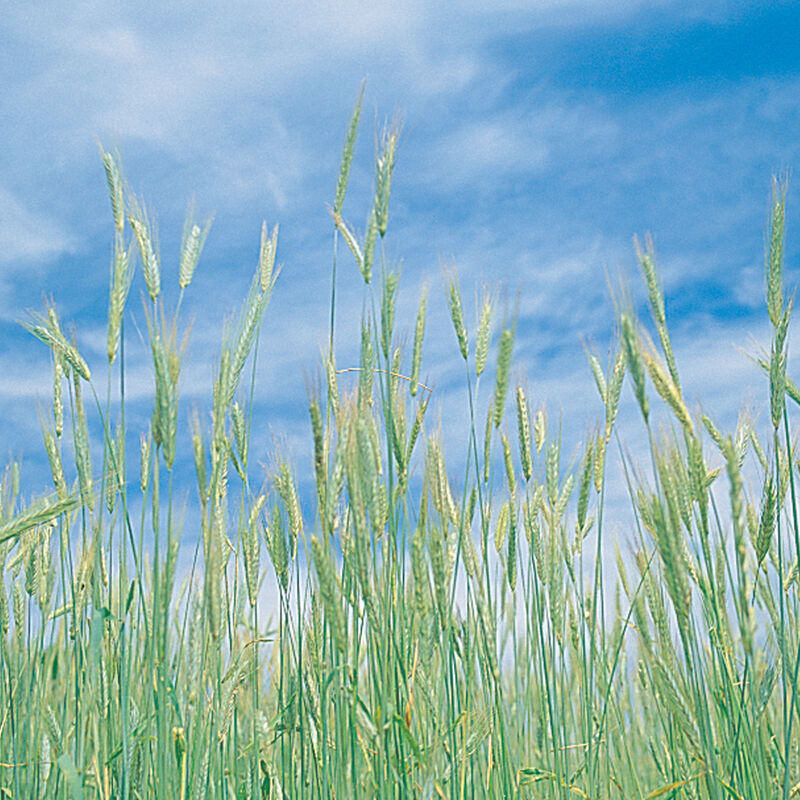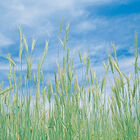Winter Rye (Common) Organic Cover Crop Seed
Winter Rye (Common) Organic Cover Crop Seed
Hardiest winter cover crop to prevent soil erosion and add organic matter.
If rye grain or straw is desired, sow in fall for midsummer harvest. For green manure, sow anytime spring through midfall. USDA Certified Organic.Specs:
- This product does not ship to Canada.
- This product does not ship to the following countries: Austria, Belgium, Bulgaria, Cyprus, Czech Republic, Germany, Denmark, Estonia, Spain, Finland, France, United Kingdom, Greece, Croatia, Hungary, Ireland, Italy, Lithuania, Luxembourg, Latvia, Netherlands, Poland, Portugal, Romania, Sweden, Slovenia, Slovakia.
This item’s size, weight, or shape may require an additional shipping surcharge based on the shipping location selected. Specific charges will be displayed during checkout.
Shipments to Canada require a phytosanitary certificate, which includes a $125.00 fee (rates subject to change), and cannot be processed online. Please call 1-877-564-6697 to place orders to Canada.
Uses: Hardiest winter cover crop. Soil erosion control. Adds organic matter. Excellent competitive and allelopathic weed control. Winter rye can also be grown to seed maturity and harvested for culinary purposes.
Culture: Winter rye can be sown ¾–1.5" deep using a push seeder or grain drill. It can be broadcast at slightly higher rates, then lightly harrowed or pressed in with a cultipacker. Green manure: Sow any time spring through midfall. Best sowing dates: Zone 3: Mid-Aug. to mid-Sept.; Zone 4: Mid-Aug. to late Sept.; Zone 5: Mid-Aug. to mid-Oct.; Zone 6: Late Aug. to late Oct.; Zone 7: Early Sept. to mid-Nov. Edible rye grain or straw: Sow in late summer or fall for midsummer harvest the following year.
Seeding Rate: 2–3 lb./1,000 sq.ft., 60–150 lb./acre. For late fall sowing, increase the rate to as much as 200 lb./acre. In mixtures with legumes, reduce seeding rate (e.g. 60 lb./acre when sown with clover). In a mix with hairy vetch, seed rye at 70 lb./acre (2–3 lb./1,000 sq.ft.) and vetch at 30 lb./acre (1 lb./1,000 sq.ft.)
Light/Soil Requirements: Full sun. Adaptable to most soil types; more productive in lighter soils than heavy clay; prefers dry soils over wet, poorly drained soils. Ideal pH: 5.0–7.0.
Height: 36–72"
Harvest: For edible grain harvest, wait until rye seed has matured in midsummer. Cut and bundle when the rye heads are fully dried – called the "hard dough" stage. Thresh, winnow, and store until just before using.
Termination: Winter rye can be terminated using tillage at any stage before the flower heads emerge. Multiple passes or more aggressive tillage may be required as the crop matures. After flower emergence, termination becomes more difficult to manage with tillage. After flowers begin to shed pollen, mowing or crimping grains will create a dense mat of mulch on the soil's surface. Multiple passes may be required to get any plants that rebound. Applying tarps after mowing or crimping will help ensure termination and speed up decomposition.
Johnny's is committed to your success, every step of the way.
We want you, our customer, to be 100% satisfied with all of our seeds, tools, and supplies.
If anything you purchase from us proves unsatisfactory, we will either replace the item or refund the purchase price.




